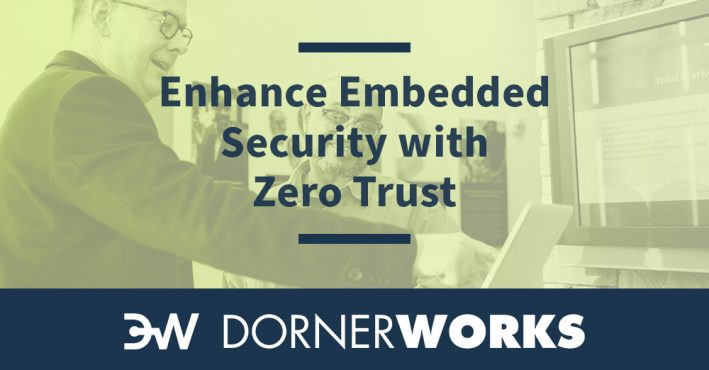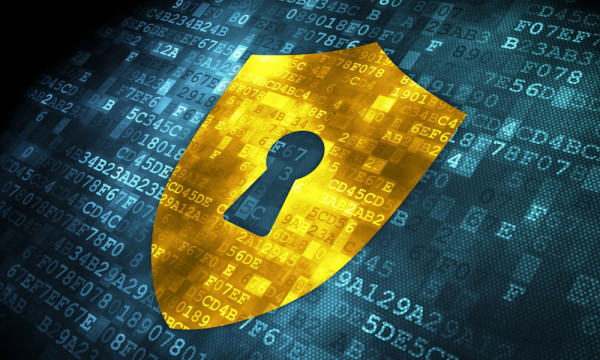
In today’s digital age, cyber-attacks are becoming increasingly sophisticated and frequent, posing a significant threat to businesses and individuals alike. Traditional security measures are no longer sufficient to protect against these evolving threats, and a new approach is needed. This is where the concept of Zero Trust comes in.
Zero Trust is a security model that assumes no user or device can be trusted by default, regardless of whether they are inside or outside the network perimeter. Instead, it requires all users and devices to be verified and authenticated before being granted access to any resources, applications, or data. In other words, it operates on the principle of “never trust, always verify.”
With the rise of remote work and cloud-based services, traditional network perimeters have become increasingly blurred, making it easier for cybercriminals to infiltrate networks and steal sensitive information. Zero Trust addresses these challenges by placing security controls at every level of the network, providing better visibility and control over who has access to what, and reducing the attack surface for potential threats.
Zero Trust is a security framework that mandates the authentication, authorization, and continuous validation of all users, both inside and outside an organization’s network, regarding security configurations.



The conventional Zero Trust model typically involves hosting services either on-premises or on a remote server that the company has full control over. To connect to these services, a virtual private network (VPN) is often used, which is hosted on a demilitarized zone (DMZ). Users are required to provide their credentials, typically a username and password, to gain access to the VPN.
“This was before the popularity of multi-factor authentication (MFA), where websites and web services were secured through a multifold solution,” says DornerWorks embedded engineer Michael Doran. “The VPN would provide the user with an IP address once the verification process was completed. This would allow the user to enter the company’s internal network where the applications and services are hosted.”
We now know that single-factor authentication is not secure, as most breaches occur due to stolen or weak passwords. Moreover, one of the major security concerns with a VPN is that it can grant users unrestricted access to other internal network assets. For example, if a user logs into an SSH server, they can potentially gain access to other parts of the network. Unless there are additional security measures in place to mitigate or restrict such access, it can pose a significant risk for potential cyber-attacks.

From the viewpoint of a developer, supporting the execution, data flow, and updating of an embedded device requires additional development work. This entails verifying each component before it is executed. Ultimately, this translates to a need for more requirements, testing, integration, and validation.
From a manufacturing perspective, the system architect must decide on the best way to provision authentication keys to each device. In addition to the initial keying process, the architect must also consider how to handle the updating of keys and revocation of keys.
At DornerWorks, we use the NIST 800-207 framework as a standard for implementing Zero Trust at both the enterprise level and at the development level.
Our developers follow several key tenets when implementing Zero Trust:
By adhering to these tenets, DornerWorks engineers can implement a robust Zero Trust security framework that ensures maximum security for our clients.

Embedded systems can be made more secure by implementing a zero-trust architecture. However, there are two critical differences between embedded systems and enterprise environments that need to be considered while devising a security solution.
The first significant difference is that embedded systems have a relatively fixed set of applications, embedded processors, and communication paths. Adding new applications or devices is a rare occurrence, and even upgrading applications or replacing failed devices is infrequent. This stability means that there is less need for frequent updates and changes to the security solution, as the underlying technology infrastructure remains relatively constant.
As Doran explains, “a system integrator can lock-down the system configuration, not just the operating system but also the middleware and applications. Scheduling of trusted applications execution and approved communications paths can be defined statically in a configuration file used at boot time. Integrity testing is still advised to detect if any software component gets altered.“
Embedded systems can benefit greatly from having multiple static configurations available. These pre-approved configurations can be selected at runtime to adapt to different situations, such as a component failure or a change in operational mode. However, as Doran explains, it’s important to note that whenever a configuration change is made, the security functions need to continuously maintain a secure state before, during, and after the change is implemented.
Designing and building a Zero Trust system is a complex process that requires careful planning, a deep understanding of security principles, and the ability to identify and mitigate potential risks. Here are some key considerations and steps involved in the design and development process:
Some key considerations to keep in mind when designing and building a Zero Trust system include:
Designing and building a Zero Trust system is not a one-time event but an ongoing process. The system needs to be regularly evaluated, updated, and maintained to ensure that it remains secure against the latest threats. By following these key considerations and steps, you can design a system that is resilient, secure, and able to protect against even the most advanced security threats.

A Zero Trust approach can protect against a range of different attacks by providing multiple layers of security that must be successfully navigated to gain access to a system. Zero Trust can help you prevent your data from being compromised by limiting attack surfaces through isolation. This way, any data sent or received by the device is encrypted. Zero Trust can also help you prevent lateral movement in your system using a robust policy engine and introspection of any unauthorized entry.
Zero Trust can also help you prevent data loss through:
Here are some other types of attacks that Zero Trust security can protect against:
Phishing attacks: Phishing attacks rely on tricking users into providing sensitive information. Zero Trust security can help prevent these attacks by ensuring that users only have access to the data they need to do their jobs and by using multi-factor authentication to verify their identities.
Malware attacks: Malware attacks can be devastating for embedded systems, often causing permanent damage to the system. A Zero Trust approach can help mitigate these attacks by requiring continuous monitoring of system activity and verifying the integrity of software before it is executed.
Denial-of-service attacks: Denial-of-service attacks can cause system downtime, preventing users from accessing important data. A Zero Trust approach can protect against these attacks by using load balancers to distribute traffic and by limiting the amount of traffic that can be directed to a single server.
Insider threats: Insider threats can be difficult to detect, as these individuals already have access to the system. A Zero Trust approach can help mitigate these threats by monitoring user activity and implementing strict access controls that limit the amount of data users can access.
Advanced persistent threats: Advanced persistent threats (APTs) are long-term attacks that are designed to remain undetected. Zero Trust security can help prevent these attacks by implementing continuous monitoring and analysis of system activity, detecting anomalies, and responding to potential threats in real-time.
Zero-day attacks: Zero-day attacks are attacks that exploit previously unknown vulnerabilities in software. Zero Trust security can protect against these attacks by continuously monitoring system activity and detecting any suspicious behavior.
Ransomware attacks: Ransomware attacks can cause significant damage to embedded systems by encrypting critical data and demanding a ransom in exchange for its release. A Zero Trust approach can help mitigate these attacks by implementing regular data backups and using strong encryption to protect data.
Supply chain attacks: Supply chain attacks are attacks that target the software supply chain, often by inserting malicious code into legitimate software. A Zero Trust approach can help protect against these attacks by implementing strict security controls at each stage of the supply chain.
Overall, a Zero Trust approach can provide a comprehensive security solution for embedded systems, protecting against a wide range of different types of attacks. By implementing continuous monitoring, access controls, and other security measures, Zero Trust security can help ensure that embedded systems remain secure and protected at all times.
Zero Trust is a departure from traditional security models that assume everything inside a network can be trusted, while outsiders should be kept at bay. The Zero Trust model, on the other hand, doesn’t assume anything is safe, and instead requires strict identity verification for all users and devices trying to access resources.
Here are some of the key differences between the Zero Trust model and traditional security models:
Here are some advantages of the Zero Trust approach:
However, there are also some potential disadvantages to the Zero Trust approach:
Overall, the benefits of the Zero Trust approach generally outweigh the potential disadvantages, particularly in today’s security landscape where the threat of attacks is constantly increasing.
Zero Trust security is a crucial aspect of modern security practices, but it’s important to consider the user experience when designing and implementing these systems. The following strategies can help minimize user impact while ensuring maximum security:
Overall, it’s important to find a balance between security and user experience. By considering user needs and implementing strategies to minimize user impact, organizations can ensure that Zero Trust systems are effective without impeding productivity.
Examples of successful Zero Trust implementations abound. Notable instances include:
In all these examples, the Zero Trust approach made a significant difference in protecting against attacks and ensuring the security of sensitive data and applications. The approach ensured that every access request was verified and authorized, thereby preventing unauthorized access and minimizing the risk of attacks.

Adapting to evolving security threats is a critical aspect of the Zero Trust approach. As attackers come up with new techniques and tools, organizations must be able to respond accordingly to keep their systems secure. DornerWorks maintains a proactive approach to security, keeping up with the latest threats and making changes to their Zero Trust approach as necessary. Here are some strategies that DornerWorks employs to adapt to evolving security threats:
The Zero Trust approach is not a one-time implementation but a continuous process that requires ongoing attention and adaptation to evolving security threats. DornerWorks employs a variety of strategies to stay up-to-date on emerging threats and to adapt their Zero Trust approach accordingly. By doing so, they can provide their clients with the highest level of security for their embedded systems.
Zero Trust is a paradigm shift in security that is becoming increasingly critical in embedded systems. With traditional security models failing to keep pace with evolving threats, Zero Trust takes a proactive approach that trusts no one and nothing, constantly verifying and validating users, devices, and applications before granting access to any resources. By following a Zero Trust approach, businesses can better protect themselves from a wide range of cyberattacks, including those that are often undetectable by traditional security models.
DornerWorks has been at the forefront of Zero Trust security. Our engineers work closely with their clients to design and build Zero Trust systems that meet their specific needs, while also ensuring that user experience is not impacted.
To adopt Zero Trust security in their embedded systems, it helps to work with a trusted partner like DornerWorks. By scheduling a meeting with our team, you can learn how to turn ideas into reality and develop secure, resilient, and scalable embedded systems that will help protect against cyber threats. Schedule a meeting with our team so you can enjoy peace of mind, knowing that your business and customers are protected.